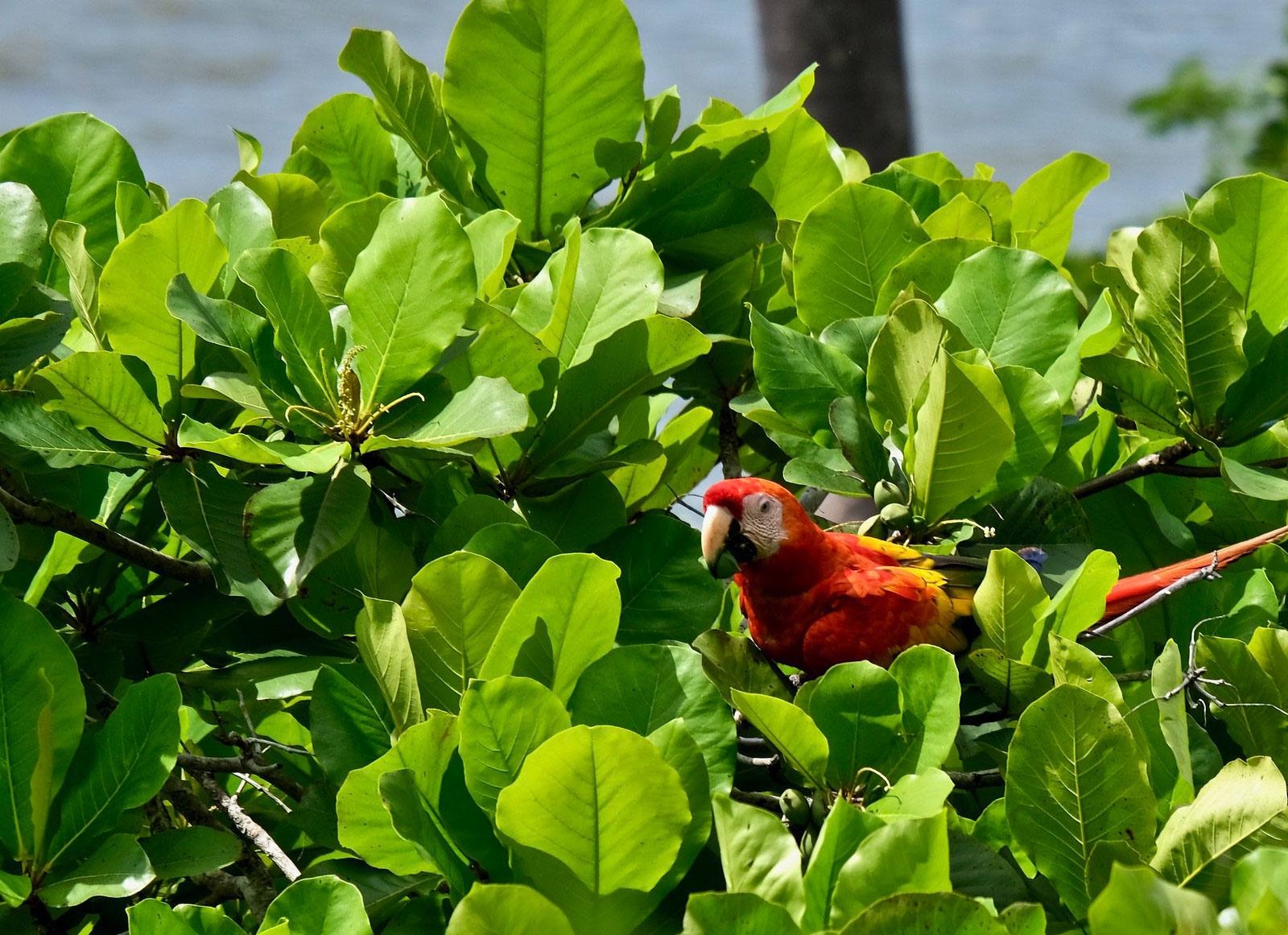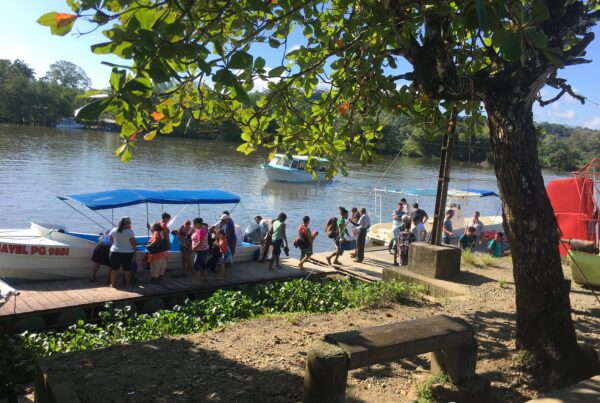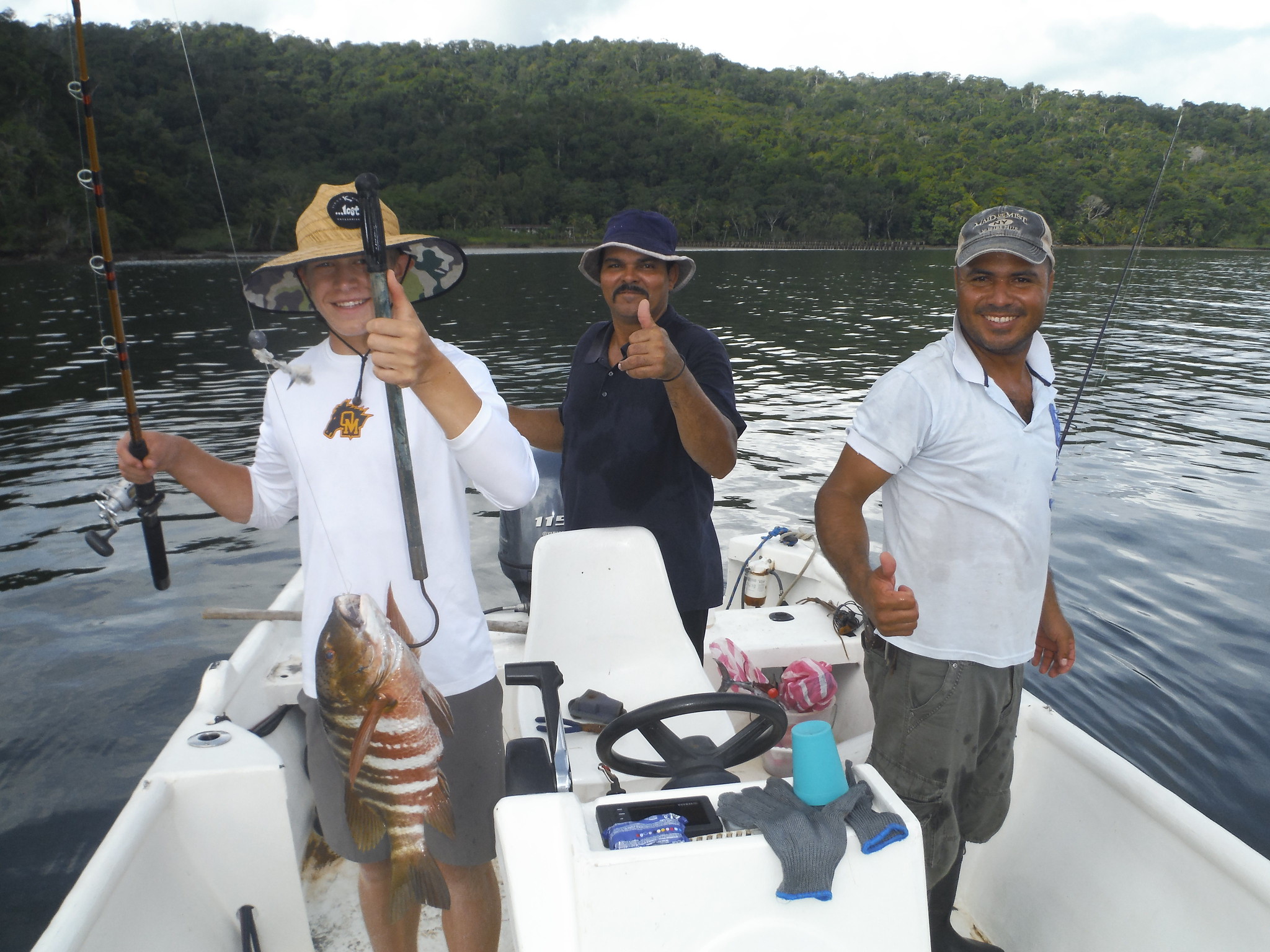 Ever heard of a fish with three tails? The Pacific tripletail or berrugate (Lobotes pacificus) is found in bays, brackish, muddy estuaries, and lower reaches of large rivers. Its name comes from the large and rounded dorsal and anal fins that extend almost to its tail, giving it the appearance of having three tails. Although not as popular as a billfish or roosterfish, tripletails are a still nice treat appreciated by sportfishers around the world. In Costa Rica, this species can sometimes be caught with hook and line on beaches close to river mouths.
Ever heard of a fish with three tails? The Pacific tripletail or berrugate (Lobotes pacificus) is found in bays, brackish, muddy estuaries, and lower reaches of large rivers. Its name comes from the large and rounded dorsal and anal fins that extend almost to its tail, giving it the appearance of having three tails. Although not as popular as a billfish or roosterfish, tripletails are a still nice treat appreciated by sportfishers around the world. In Costa Rica, this species can sometimes be caught with hook and line on beaches close to river mouths.
Another place to find tripletails is around floating objects far out to sea, leading some people to call them “buoy fish.” Juvenile tripletails are sometimes found in flotsam – lying on their sides at the surface, they may appear like a floating leaf. A widespread species that can be found all the way from Southern California to Peru, the Pacific tripletail can be commonly seen floating near or under logs in the Sierpe River and the Osa Peninsula.

If you ask to stop by a floating log on your boat ride to Casa Roja, it is likely that you will find a juvenile pacific tripletail, like our Casa Roja team did. We stopped to pick up a drifting plastic container that was unfortunately floating in the ocean, and surprise! We found a Pacific tripletail inside! But what are these fish doing there, just hanging out? Turns out that the Berrugates are trying to imitate leaves to camouflage themselves from the small fish, shrimp, and crabs they like to have for lunch. These small animals also happen to be attracted to drifting objects, and berrugates just wait for the opportunity to snap them up. This individual shown in the top photo measured about 12 inches (30 cm), and while the species usually looks darker, it has the ability to change color, similar to many fish species, and in this case looked pale white. We retrieved the plastic and released the fish to be on its way.

There are two species of tripletails. The other is Lobotes surinamensis, which can be found in tropical and subtropical regions of the Atlantic, Indian and West Pacific oceans. Some scientists suspect that the Pacific tripletail may not be a separate species, just an Eastern Pacific sub-population of L. surinamensis. In several countries, the tripletail is sold at markets fresh, frozen or salted, and it is also a target of sportfishing. Don’t let its lounging at the surface fool you – this fish can strike quickly and may surprise you with its powerful lunges when hooked. Large adults, which can grow up to 110 cm and weigh 15 kg, are often caught in deeper waters, near reefs or shipwrecks. So chances are, if you live on the East Coast of the United States, or have travelled to the islands of Indonesia, you may have bumped into a tripletail, or even cast a line for this well-finned fish.








